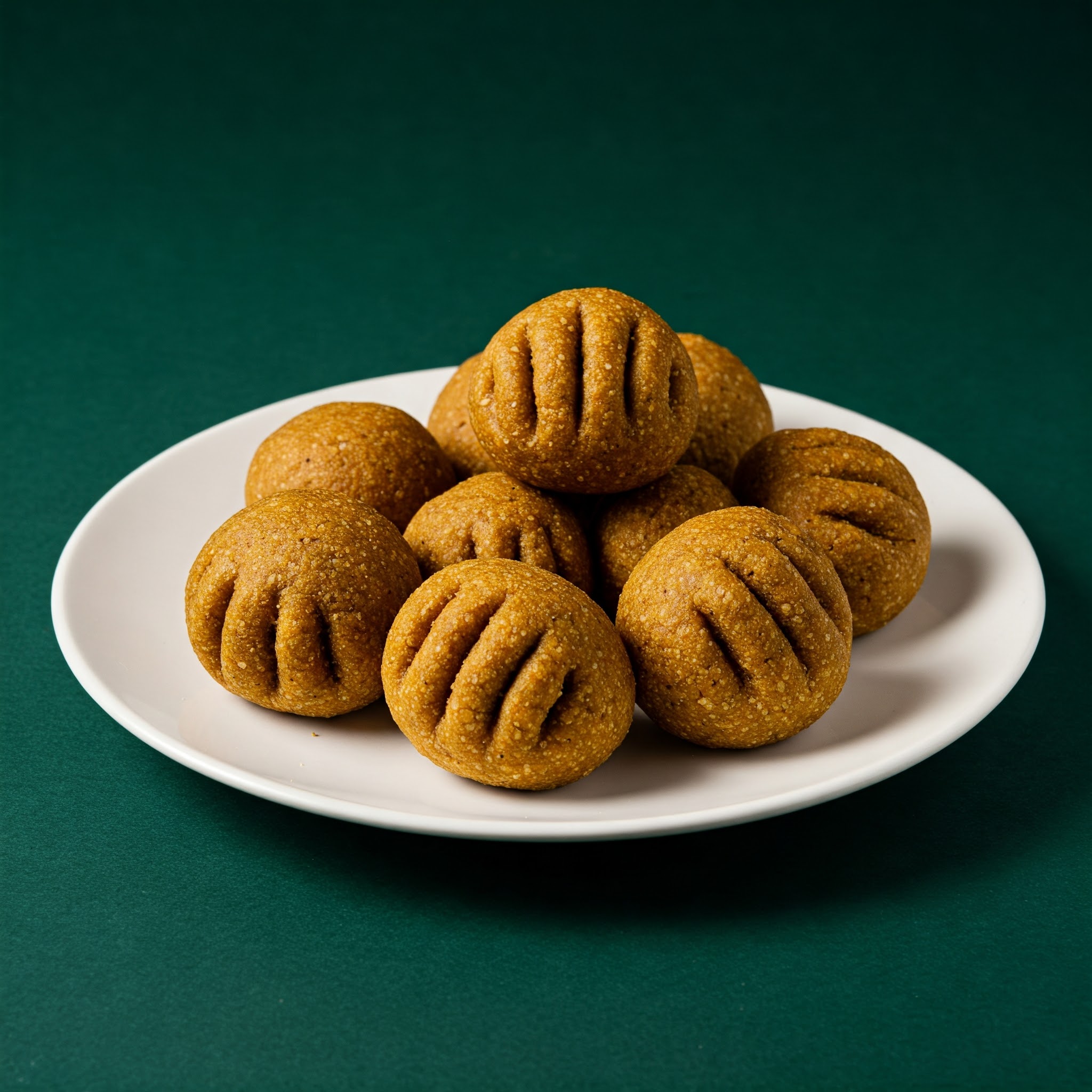Tapioca (सबूदाना)
Sabudana, cassava root

About Tapioca
Tapioca – A Delicate Delight for the Soul
Tapioca, known as sabudana in India, is a beloved ingredient that has graced kitchens across the country for generations. Its soft, translucent pearls are more than just a culinary delight – they’re a comfort, bringing warmth and nourishment in every bite. Whether it's the delicate sabudana khichdi or the creamy sabudana kheer, tapioca transforms simple ingredients into a masterpiece, filling the kitchen with an irresistible aroma.
The beauty of tapioca lies not only in its versatility but also in its ability to absorb the flavors of spices, making it a star ingredient in both savory and sweet dishes. As you chew through its tender texture, it provides a subtle sweetness that complements rich spices, offering a balance of comfort and flavor that is both satisfying and light on the stomach.
To Include Tapioca in your daily menu, logon to planmeal.com
Beyond its taste, tapioca is a powerhouse of energy. Packed with carbohydrates, it provides a quick source of energy, making it ideal for those who need a revitalizing boost throughout the day. It is naturally gluten-free, making it perfect for those with dietary restrictions. Tapioca also aids digestion and promotes gut health, while providing essential vitamins and minerals, including calcium and iron, for overall well-being.
Whether you enjoy it as a snack or a main dish, tapioca adds a unique texture and flavor to your meals. Its lightness and versatility make it a perfect addition to a balanced diet. From quick breakfasts to festive treats, tapioca has earned its place in the heart of Indian cuisine.
Deliciously light, tapioca fuels your day!
Importance of Tapioca
Tapioca is a valuable ingredient that offers several health benefits and plays a significant role in various cuisines around the world. Known for its light and easily digestible nature, it is often used in both savory and sweet dishes. Tapioca is especially popular in gluten-free diets due to its natural absence of gluten, making it a safe choice for individuals with gluten sensitivity or celiac disease.
Rich in carbohydrates, tapioca provides a quick and sustained source of energy. It is often included in meals to boost stamina and offer a light alternative to heavier grains. It also contains a small amount of essential nutrients like calcium, iron, and magnesium, which contribute to bone health, improved circulation, and better muscle function.
In addition to its nutritional benefits, tapioca is versatile and easy to incorporate into a wide variety of dishes. From traditional Indian sabudana khichdi to desserts like tapioca pudding, its adaptability makes it an excellent choice for different dietary preferences and needs.
Whether you are looking for a quick energy boost or a gluten-free alternative, tapioca can serve as an important part of a balanced diet. It is both nutritious and easy on the stomach, making it an ideal option for people of all ages.
How to Store Tapioca
How to Store Tapioca
Tapioca must be stored properly to ensure it stays fresh and maintains its quality. Fresh tapioca roots, also known as cassava, are highly perishable and should be used as soon as possible. If you can't use them immediately, they can be stored in a cool, dry place for 2 to 3 days at room temperature. To extend their shelf life, refrigerate the roots, which may allow them to last up to a week. However, refrigeration may affect the texture, so it is always best to use fresh tapioca sooner rather than later.
For dried tapioca, including tapioca pearls or chips, store it in an airtight container to prevent moisture absorption. Keep the container in a cool, dry place, away from sunlight and humidity. Dried tapioca can last for up to 6 to 12 months when stored correctly. Avoid storing dried tapioca in the refrigerator or freezer as this can alter its texture and cause clumping.
Tapioca flour, like its dried counterpart, should be stored in a tightly sealed container. Keep it in a cool, dry location to prevent it from absorbing moisture or becoming rancid. When unopened, tapioca flour can last for up to 1 year, and once opened, it is best to use it within 6 months for optimal freshness.
By ensuring that tapioca is stored in proper conditions, you can preserve its quality and enjoy it in your recipes for longer periods.
Shelf Life of Tapioca
Shelf Life of Tapioca
Tapioca has a varying shelf life depending on its form (fresh, dried, or flour) and storage conditions:
- Fresh Tapioca (Cassava Root): Fresh tapioca roots have a shelf life of around 2 to 3 days if stored at room temperature. To extend freshness, store them in a cool, dry place, or refrigerate for up to a week. However, fresh tapioca should be used quickly as it spoils rapidly.
- Dried Tapioca: Dried tapioca, in the form of pearls or chips, can last for 6 to 12 months when stored in an airtight container in a cool, dry place. Ensure that it is kept away from moisture to prevent spoilage.
- Tapioca Flour: Unopened tapioca flour can last for up to 1 year when stored in a sealed container in a cool, dry place. Once opened, use it within 6 months for optimal freshness and quality.
Important Note: Always check for signs of spoilage, such as a sour smell, mold, or unusual discoloration, especially with fresh tapioca. Proper storage is key to extending its shelf life and preserving its quality.
How to Check Tapioca Before Buying
How to Check Tapioca Before Buying from Local Vendor
When purchasing tapioca, whether in its root or pearl form, it’s important to ensure its quality. If you're buying fresh cassava root (the source of tapioca), check for firmness and avoid any roots with visible mold, cuts, or soft spots. Fresh tapioca should have smooth, unblemished skin. If buying dried tapioca pearls, ensure they are uniform in size and have no signs of discoloration. The pearls should be clean, dry, and free from clumps or excess moisture.
Additionally, smell the tapioca. Fresh roots should have a neutral smell, while dried tapioca pearls should be odorless. Any sour or musty smell indicates spoilage, and the product should be avoided.
When to Purchase Tapioca in Bulk
The best time to purchase tapioca in bulk is during the post-monsoon season, typically between October and February. This is when fresh cassava roots are harvested, and tapioca is most abundant in the market. Purchasing during this period ensures the best quality and freshness. For dried tapioca, it’s wise to buy in bulk during the harvest season, as it has a long shelf life when stored properly.
Explore
Explore our services and take your business to the next level.
Recent Posts

Spiced Buttermilk is the perfect addition to your weekly menu, offering a refres...

Kuttu and Lauki Soup is a wholesome, nutrient-packed dish that seamlessly fits i...

Kuttu Muthiya is a perfect addition to your weekly meal plan, offering a healthy...

Jodhpuri Aloo is the perfect addition to your weekly meal plan, offering a delic...

Kuttu and Potato Tikki is a wholesome, gluten-free snack that blends the earthy...
Ready for a Healthier You?
Take control of your wellness! Get a customized meal plan that fits your lifestyle. It's time to eat smarter, feel better, and transform your life!
Get Your Plan Now!Already a member? Login and start now!
Nutrition Facts
Serving Size:
Servings Per Container: 1
| Amount Per Serving | ||
|---|---|---|
| Calories | 80.54 | |
| Fat | ||
| Saturated Fat | ||
| Trans Fat | ||
| Cholesterol | 0 | |
| Sodium | 10.86 | |
| Carbs | 17.81 | |
| Fiber | ||
| Sugar | 0 | |
| Protein | 0 | |
| VitaminD | ||
| Calcium | 25.89 | |
| Iron | .81 | |
| Potassium | 255 | |
* Percent Daily Values are based on a 2000 calorie diet.
* Percent Daily Values are based on a 2000 calorie diet.

